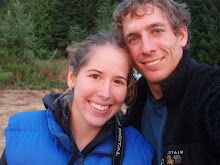In late February Beth Rodden redpointed a new 5.14 in Yosemite. This 70 foot line is called Meltdown and features a thin finger crack that leads to discontinuous seams. Rodden placed all of her gear on lead after a winter of work on the line. Many think this is the hardest “trad” climb done by a woman and is quite an amazing send. The Alpinist has some info but better pictures and history about the route can big found on the BigUP blog. Beth will be featured climbing Meltdown and a few other hard climbs in Dosage V.
A Supertopo thread about Beth spurred a discussion about what is “Trad” and how you relate Trad to the rest of the categories of climbing. Does Trad imply that the ascent is done ground-up or does it just specify the style of gear used to protect a redpoint? While these markers of style are not essential to our sport it is interesting to see how they are interpreted. Does trad mean that there are no bolts on the line that are used for lead protection? I think that the meaning of trad has evolved since the original use of the word. I think that these days trad is most commonly used to mean something that is not a Sport climb. To me a trad climb simply implies you must place your own protection.
This makes me wonder where does mixed climbing falls? I mean mixed protection climbing which is not to be confused with mixed climbing that refers to a combination of rock and ice climbing where ice tools and crampons are used. A mixed route that offers both cams and bolts is some times referred to as a trad route since one must place some of your own protection. A good example of “Trad” climbing where bolts are used is seen in Red Rocks. Many of the climbs in Red Rocks have the ocational bolt when natural protection can not be found. I think of these as trad climbs despite the use of an occasional bolt for protection. These bolts are used when traditional protection can not be found and to keep the routes fairly safe. The safety issue comes in direct contrast to the bold bolt-free climbing style. In Red Rocks there is also an issue with some climbs that have been over bolted so that they are more accessible.
Beyond the type of gear used to protect a climb it is interesting that “Trad” can refer to the style of the ascent. Some say that a major distinction between Sport and Trad is whether the climb is done ground up or top down. “Traditional climbing means starting at the bottom and going to the top, without weighting pro. That, I put forth, is the traditional mindset.” This means that could you could climb a sport route in traditional style by sending ground up as opposed to rappelling it and inspecting it or hangdoging it and then redpointing it later. This seems a bit odd to me but it can make sense in the way climbs were established. A sport climb could have the bolts drilled on lead for a ground up ascent. I believe this was common practice before climbers started bolting on rappel. By establishing a climb top down you would eliminate the adventure by figuring out sequences in advance. I image this is why hang dogging was such heresy back when yo-yoing was the common practice.
Put in perspective of a traditional ground up ethic yo-yoing makes a bit more sense. By having to lower to the ground after a fall you would still have to be onsighting the upper most moves. Hangdoging allowed a climber to start from anywhere on a climb and slighted the ground up style. I can now see why there was so much debate on style and what is acceptable. If you fully believe in the Traditional spirt of climbing ground up without bolts then hangdogging while sport climbing (with bolts) is very much out of the question.
On Supertopo John Bachar goes on to specify the difference between Onsight and Onsight Flash. This was a distinction that I had never heard of and is way old school. In a way it does make sense in a world where when you fall you lower all the way to the ground (Yo-Yo style). Thus even though you have fallen you will eventually Onsight a climb since every move you will have at one point had to do for the first time until your eventual “Redpoint”. This seems strange in the current use of the word that is used to say that you did the climb first try all the way to the top without any beta.
It is odd that the distinction between Onsight and Onsight Flash seen above does not mention beta at all. I think this is a more interesting discussion. At what point do we cross the line from a Onsight to a Flash, in the modern sense of the words. Since climbing is just a type of game it is interesting that different people play by different rules. What I think is important is that you are honest about the style. If you call a send an Onsight but you had someone tell you about the climb then just be honest that your friend told you beta.
Style is important but it is more important to have fun and let everyone make their choices. We do not want to have anyone chipping routes or placing bolts right next to perfect natural protection. What has worked over the years is to allow different areas to feature their own set of rules and style of climbing. This can be a result of both the kind of rock and the mindset of the locals. So try to think outside the box and respect the traditions at the crags you frequent.
- Luke
Subscribe to:
Post Comments (Atom)

No comments:
Post a Comment